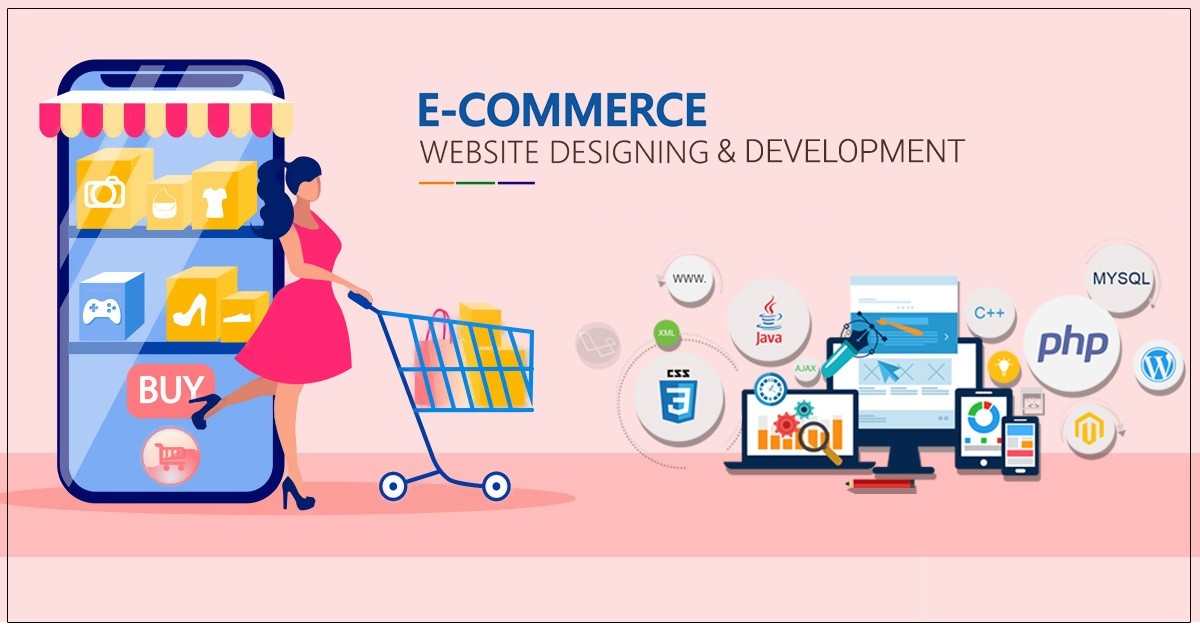When selecting an eCommerce website design company, one of the most crucial questions to ask is about their previous work. The examples of eCommerce websites they’ve designed not only showcase their skills and expertise but also provide insights into their design philosophy and how they address different business needs. In this blog post, we’ll explore why reviewing previous projects is essential, highlight key elements to look for in these examples, and present a variety of successful eCommerce websites across different industries.
Table of Contents
ToggleWhy Reviewing Previous Work Matters
Understanding Design Style and Capabilities
Every design agency has its unique style, influenced by their experience and client requirements. By reviewing their portfolio, you can assess whether their aesthetic aligns with your brand identity. Moreover, seeing a range of projects demonstrates their ability to cater to different industries and design needs.
Assessing Functionality and User Experience
An Ecommerce Website Design Company must be more than visually appealing; it also needs to be functional and user-friendly. Examining previous designs allows you to evaluate how well the agency creates intuitive navigation, seamless checkout processes, and engaging product displays. These factors are crucial for driving conversions and enhancing customer satisfaction.
Industry Expertise
Certain design companies may specialize in specific industries, such as fashion, technology, or food and beverage. By reviewing their portfolio, you can identify if they have relevant experience in your sector, which can translate to better understanding and execution of your vision.
Key Elements to Look For in eCommerce Website Examples
Visual Design
A successful eCommerce website should have an appealing visual design that reflects the brand’s identity. Look for:
- Color Schemes: Effective use of color can evoke emotions and influence buying behavior.
- Typography: Readable and stylish fonts enhance user experience and brand recognition.
- Imagery: High-quality images are essential for showcasing products effectively.
Navigation and Usability
Evaluate how easy it is to navigate the website. Key considerations include:
- Menu Structure: Is it intuitive and easy to understand?
- Search Functionality: Can users quickly find products?
- Mobile Responsiveness: Does the site work well on mobile devices?
Checkout Process
A smooth checkout process is vital for reducing cart abandonment. Look for:
- Guest Checkout Options: Allowing users to purchase without creating an account can streamline the process.
- Multiple Payment Options: Offering various payment methods can cater to diverse customer preferences.
- Clear Progress Indicators: Showing users where they are in the checkout process can reduce anxiety.
SEO and Performance
A well-optimized website will rank better in search engines. Assess:
- Page Load Speed: Fast-loading pages enhance user experience and SEO.
- SEO Best Practices: Look for clean URLs, meta tags, and alt text for images.
Examples of Successful eCommerce Websites
1. Fashion eCommerce: ASOS
Overview: ASOS is a leading online fashion retailer that showcases a wide range of clothing, accessories, and beauty products.
Design Highlights:
- Visual Appeal: The website uses vibrant colors and high-quality imagery to create an engaging shopping experience.
- User Experience: Intuitive navigation and robust filtering options make it easy for users to find products.
- Mobile Optimization: The site is fully responsive, providing an excellent shopping experience on mobile devices.
Takeaway: ASOS exemplifies how effective visual design and usability can drive online sales in the fashion industry.
2. Technology eCommerce: Newegg
Overview: Newegg specializes in computer hardware and electronics, catering to tech enthusiasts and professionals.
Design Highlights:
- Clear Categorization: Products are well-organized into categories, making it easy for users to navigate.
- Product Comparison Tools: Users can compare products side by side, enhancing decision-making.
- Rich Product Descriptions: Detailed specifications and customer reviews help build trust.
Takeaway: Newegg demonstrates the importance of functionality and information accessibility in the tech sector.
3. Health and Beauty: Sephora
Overview: Sephora is a global leader in cosmetics and skincare, offering a wide range of beauty products.
Design Highlights:
- Interactive Features: Virtual try-on tools and user-generated content enhance customer engagement.
- Personalization: The site uses algorithms to recommend products based on user behavior and preferences.
- Seamless Checkout: The checkout process is streamlined, reducing friction and cart abandonment.
Takeaway: Sephora’s focus on personalization and interactivity sets a benchmark for health and beauty eCommerce.
4. Food and Beverage: Blue Apron
Overview: Blue Apron delivers meal kits to customers, emphasizing convenience and quality ingredients.
Design Highlights:
- Subscription Model: The website effectively promotes its subscription service, with clear options for customers.
- Visual Storytelling: High-quality images and recipes engage users and encourage purchases.
- User-Friendly Interface: Simple navigation makes it easy for customers to select meals and manage subscriptions.
Takeaway: Blue Apron’s website highlights the effectiveness of visual storytelling in promoting food products.
5. Home Goods: Wayfair
Overview: Wayfair is a leading online retailer of home goods, offering everything from furniture to décor.
Design Highlights:
- Extensive Filtering Options: Users can filter products by style, price, color, and more, making it easy to find what they want.
- Augmented Reality: The site features AR tools that allow customers to visualize how products will look in their homes.
- Customer Reviews and Ratings: Reviews are prominently displayed, helping customers make informed decisions.
Takeaway: Wayfair’s commitment to user experience and innovation makes it a standout in the home goods sector.
How to Analyze eCommerce Website Examples
Consider Your Brand’s Needs
When reviewing examples, keep your brand’s identity and target audience in mind. What elements resonate with your vision? How do the designs reflect the unique aspects of the products or services you offer?
Evaluate the User Journey
Think about the user journey from landing on the homepage to completing a purchase. Are there any obstacles that might lead to frustration or cart abandonment? Identifying potential pain points can help you communicate your needs effectively to your design team.
Compare Different Industries
Look at examples from various industries to understand different design approaches. For instance, a fashion website might prioritize aesthetics and trends, while a tech site may focus more on functionality and specifications. This comparative analysis can inspire your own design choices.
Conclusion
Asking an eCommerce website design company for examples of their previous work is a vital step in the selection process. By understanding the design elements that contribute to successful Ecommerce Website Design Company sites, you can better evaluate whether a particular company is the right fit for your needs. From visual design to functionality and user experience, reviewing past projects provides invaluable insights into what to expect from your partnership.
Ultimately, the right eCommerce website design company will help you create an engaging, user-friendly, and visually appealing site that not only reflects your brand but also drives sales and fosters customer loyalty. By carefully analyzing the examples they provide, you can make a more informed decision and set the stage for your online success



